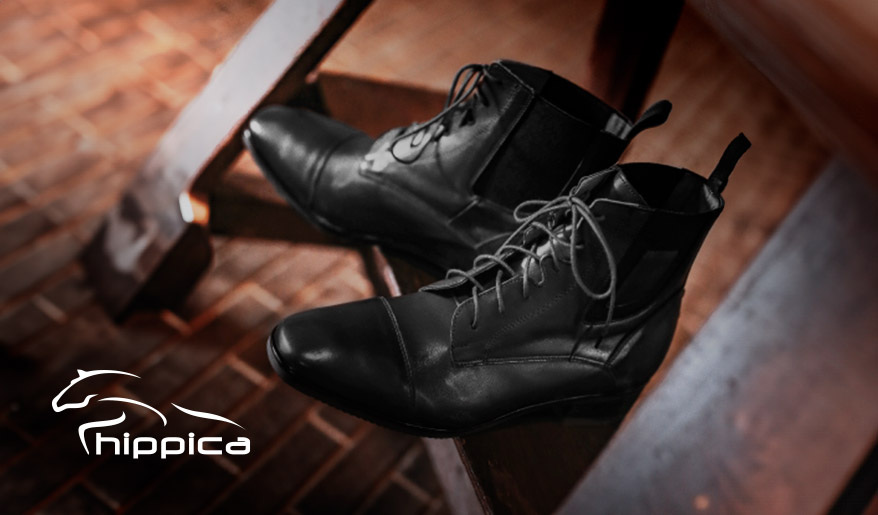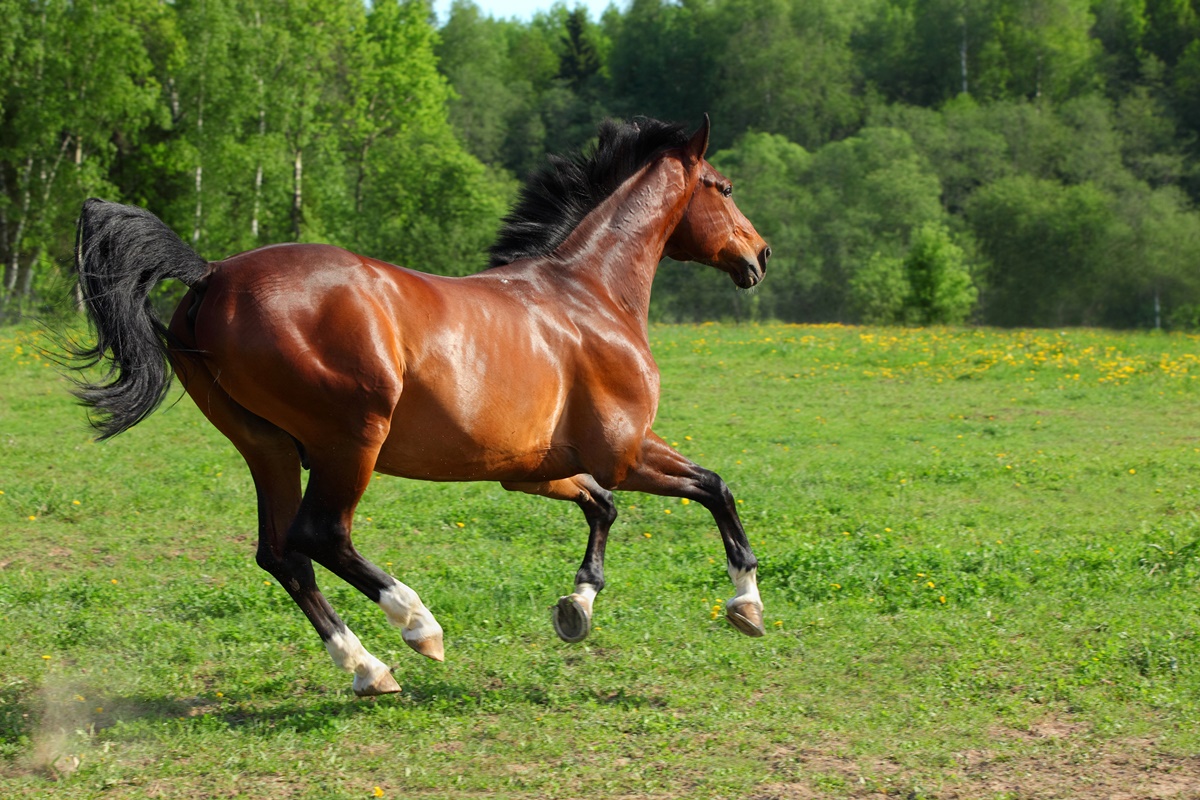
Hanoverian horses are one of the most desirable breeds for competitive sports. They are graceful, elegant, eager to learn, and have a nice temperament. Hanoverians are perfect for dressage as well as show jumping; the breed also has great achievements at world championships and Olympic Games. Read our article to learn!
Hanoverian horses – history of the breed
The name of the breed derives from a region in northern Germany – Hanover (in German Hannover), which became a part of the British Empire at the beginning of the 18th century. Hanoverians were originally bred to pull carriages as well as to help on farms and in the military.
In 1735, the king of Great Britain and Ireland – George II, established the Celle State Stud that started the breeding of Hanoverian horses. Prussian, Holstein, Spanish, and Mecklenburg horses were cross-bred with the addition of Thoroughbreds and half-bloods. This resulted in a horse with a fine physique and nice movement.
In 1837, after the death of William IV, the personal union between Britain and Hanover ended due to law restrictions. The Hanoverian law prohibited a woman from sitting on the throne, while England had a new ruler, Queen Victoria. From there on, the Celle Stud bred working and cavalry horses up until the technological advancements in motorization.
In 1867 breeders founded an association with the goal of creating a horse for carriage pulling and military purposes. The stud book was established in 1888. From then on, the Hanoverian Association in Verden kept a register of the breed.
Nowadays, the Hanoverian Association runs one of the most successful show jumping stud books according to the WBSFH and FEI rankings, where it first appeared in 2001.
How did the breeding of modern Hanoverians begin?
After the Second World War, the demand for sport and general riding horses rose drastically. The breeders yet again tried to refine the horses by cross-breeding Hanoverians with Thoroughbreds as well as Trakehner and Anglo-Arabian stallions (among others: Semper, Idem, Der Löwe XX, Abglanz stallion). The breeding successfully changed their goal and produced a horse that is now known as Hanoverian.
The key to this success was rigorous selective breeding and the ability of the breeders to adjust their goals to the market demand. This is when the hereditary traits became fully stabilized.
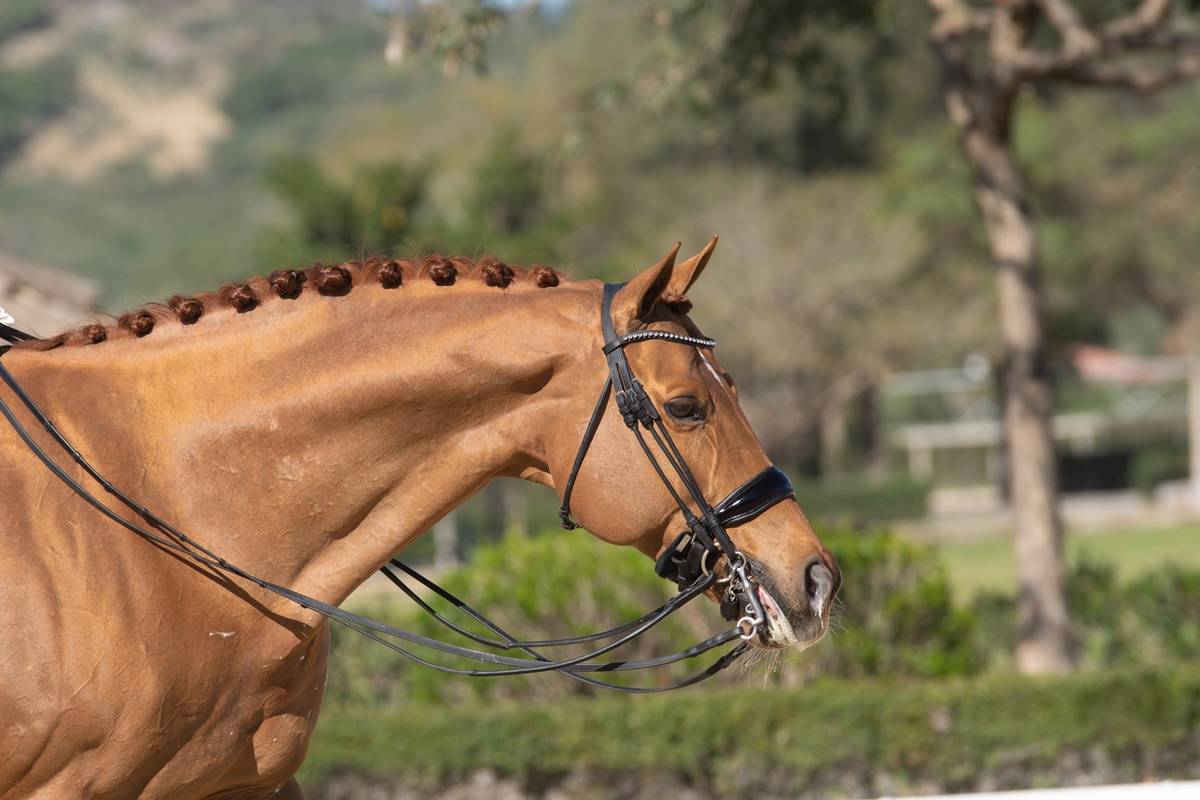
Hanoverian horses – number of herds
These days, the biggest herds can be found in the motherland of the breed – Hanover, Germany, especially in the above-mentioned Celle State Stud. However, numerous private breeding stables can be found all over the world.
Hanoverians undergo restrictive control of the breeding value (stallions and mares). Horses that don’t meet the breed standards included in the studbook cannot be registered as breeding mares or stallions.
Hanoverian horses – physique, characteristics, and description
Hanoverians are elegant, warm-blood horses with a harmonious physique and medium height. They have a characteristic big head with either a concave or straight head, wide forehead, big eyes, and long neck. Hanoverian horses also have long backs, prominent withers, and nicely built shoulders. The barrel is wide and deep.
Hanoverian horses have big, sometimes slightly flat but angular croup with a highly set tail. This makes the breed resemble a draught horse – created for hard work. The clearly defined joints, strong loins, and powerful hind legs with large hooves allow Hanoverian horses to have great jumping ability and efficient, energetic movement.
Height: 160-185 cm (most breeders aim to have horses with 165 cm in height)
Coat colors: all basic colors – chestnut, bay, grey, black
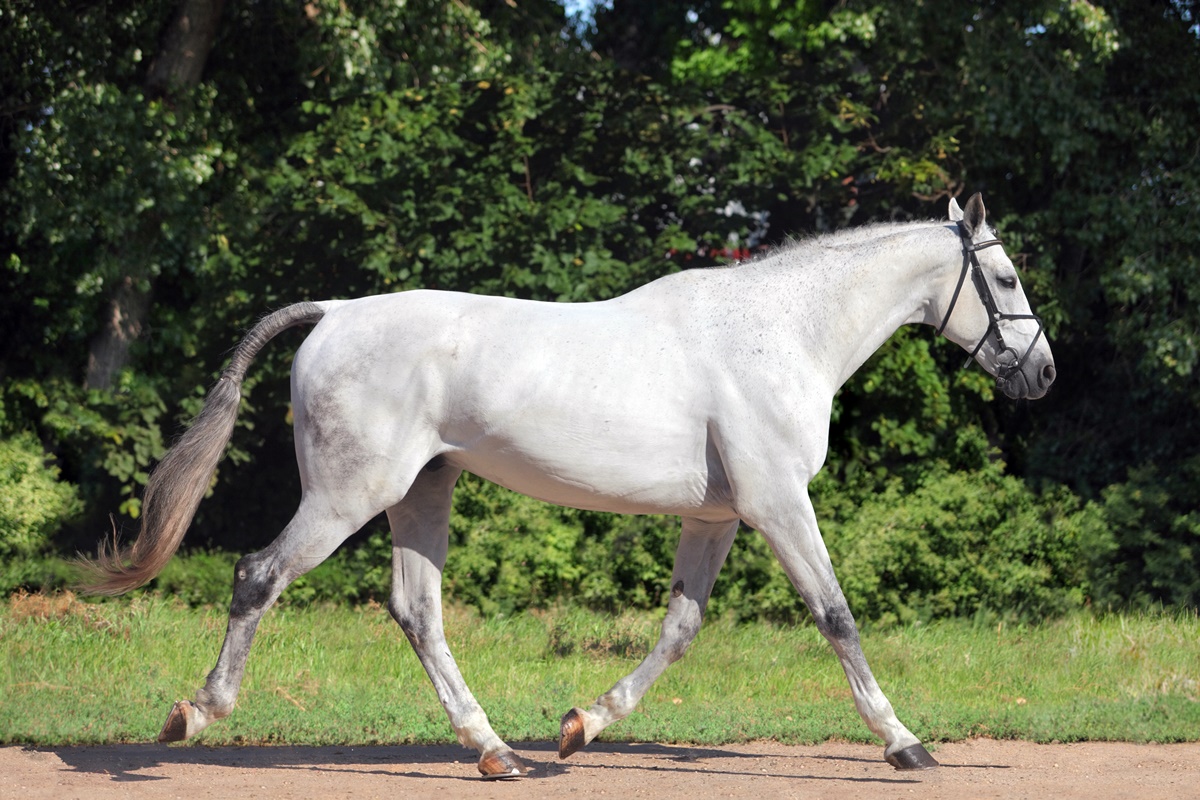
How much does a Hanoverian horse weigh?
Similarly to other warmbloods, Hanoverian horses weigh around 650 kg. The weight can vary depending on the horse’s height, age, and muscle mass.
Hanoverian horses – role
These days, Hanoverians are frequently used as sport horses, especially for show jumping and dressage. Hanoverian horses also compete in eventing and carriage driving.
Hanoverian horses are a noble breed that has a natural balance, and impulsion, as well as elegant, flexible movements: fluid trot, rhythmical canter, and smooth walk. These athletic horses have strong legs and a body that fits into a rectangular shape.
Hanoverian horses are also great for recreational riding. Their temperament makes them an extremely popular breed. They are intelligent, calm, and eager to learn.
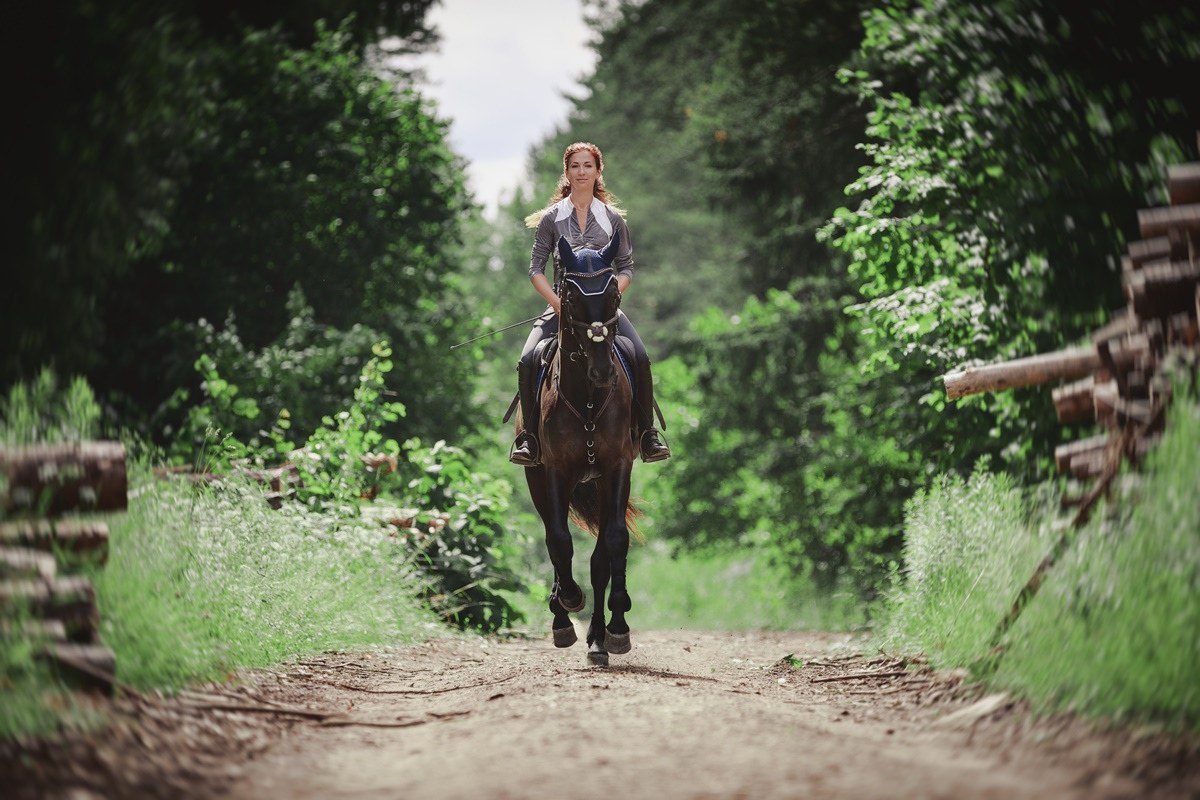
How much does a Hanoverian horse cost?
Thanks to their success in various competitions, Hanoverian horses can reach high prices. Other than the famous stallion selection, Hanoverian Association organizes a yearly auction sale in Verden, Germany. What’s interesting, the most expensive horse shown during the auction was worth 2,1 million euros!
The price for Hanoverian horses varies depending on their age, pedigree, sex, and previous success in competitions. In Poland, Hanoverian horses cost from 30 thousand pln to 200 thousand pln.
Famous Hanoverian horses
Many Hanoverian horses made a name for themselves in the equestrian world, thanks to their successful careers in the international arena. Hanoverian stallions are frequently chosen as sires, and their offspring are just as successful.
It’s worth noting that Hanoverian horses were part of six teams that won gold medals in show jumping at the Olympic Games (2000, 1996, 1992, 1988, 1964, 1960).
Below, you can find a few words about Hanoverian horses that you must know!
Gigolo and Isabell Werth
The German-bred gelding – Gigolo (born 1983, sire Graditz) is a Hanoverian horse that worked with Isabell Werth. Together they won four gold medals at the Olympic Games (1992-2000) and twice received double team and individual gold medals during the FEI World Equestrian Games in 1994 in Hague, and 1998 in Rome!
Goldfever i Ludger Beerbaum
Another Hanoverian horse, known on the show jumping circuit, stallion Goldfever I (born 1991, sire Grosso Z) belonged to Ludger Beerbaum. This pair won a team gold medal during the Olympic Games in Sydney in 2000, a team gold medal, and an individual silver medal during the European Championships in 2007. In recognition of his outstanding successes, Goldfever was immortalized in the Aachen Walk of Fame in 2015. During his whole sports career, Goldfever won over 2,3 million euros. He retired from competition after the start in CHIO, Aachen in 2009. In 2010 he won the Hanoverian Stallion of the Year. These days, Goldfever is used for breeding.
Shutterfly and Meredith Michaels-Beerbaum
Shutterfly (born 1993, sire Silvio) is a Hanoverian gelding that along with rider Meredith Michaels-Beerbaum won during his whole career over 3,5 million euros. Some of his successes include three gold medals at the World Cup finals and the 2005 Rolex Grand Prix of Aachen, as well as at the Top Ten finals. He also won a bronze medal at the World Equestrian Games in 2006, an individual gold medal, and a team silver medal at the European Championships in Mannheim. Shutterfly had an amazing career finish; he won the Prize of Europe at Aachen in 2011 at the age of 18 and retired after that success. He was bid farewell by 55,000 devoted fans, who gave him a standing ovation. Today, the gelding lives in Thedinghausen.
For Pleasure i Lars Nieberg oraz Marcus Ehning
For Pleasure (born 1986, sire Furioso II) is a Hanoverian stallion that first competed with Lars Nieberg, and then from the year 2000 with Marcus Ehning.
The most important winnings of For Pleasure:
Individual gold medal during the Grand Prix in Zurich (2004) and in Göteborg (2003), CSI-W in Leipzig (2004), World Cup in Geneva (1996), and Brussels (1996).
Team gold medal during the Olympic Games in Syndey (2000) and Atlanta (1996), as well as during the European Championships Donaueschingen (2003), Hickstead (1999), and Manheim (1997).
At the age of 20, For Pleasure was bid farewell during a touching ceremony that took place in 2006 in Aachen CHIO. The horse was retired due to an injury (tendon injury). For Pleasure passed away in 2011 as one of the greatest breeding stallions and jumping horses in Germany.
Summary
Hanoverian horses come from northern Germany, the former Kingdom of Hanover, where there has been a thriving breeding industry for 400 years. Nowadays, the breed can be found on all five continents and represents one of the most outstanding warm-blood breeds in the world.
What’s interesting, Hanoverian horses have one of the longest traceable genetic lines in the equine world.
Calm, level-headed, eager to work with humans, and quick to react to cues. The Hanoverian horse has been bred for centuries to face a variety of demanding conditions. Today Hanoverians are great athletes, triumphing in most equestrian disciplines and achieving international success in them.







